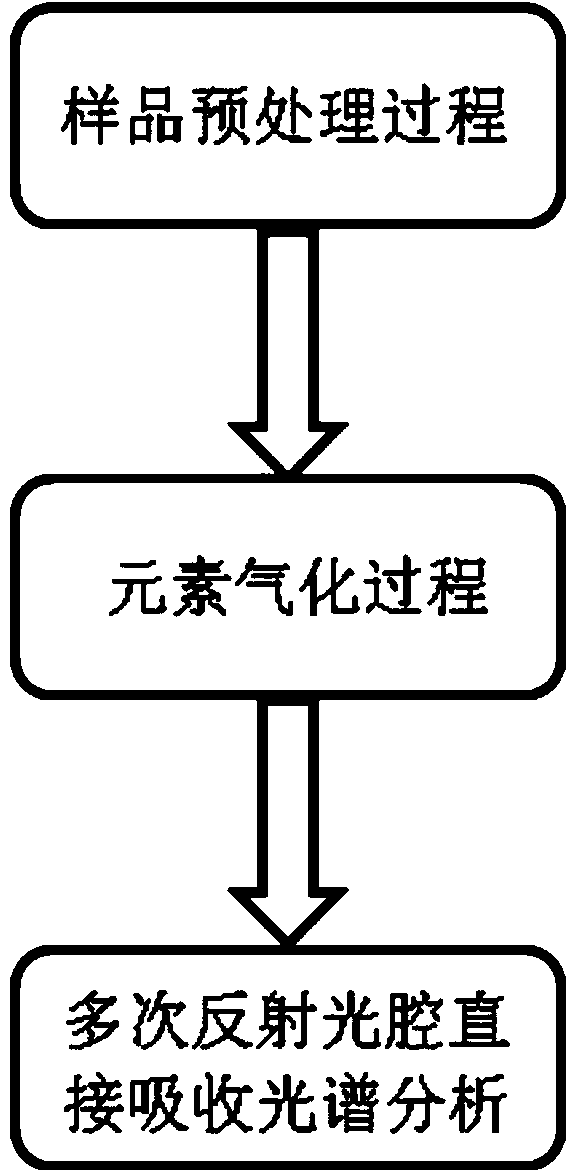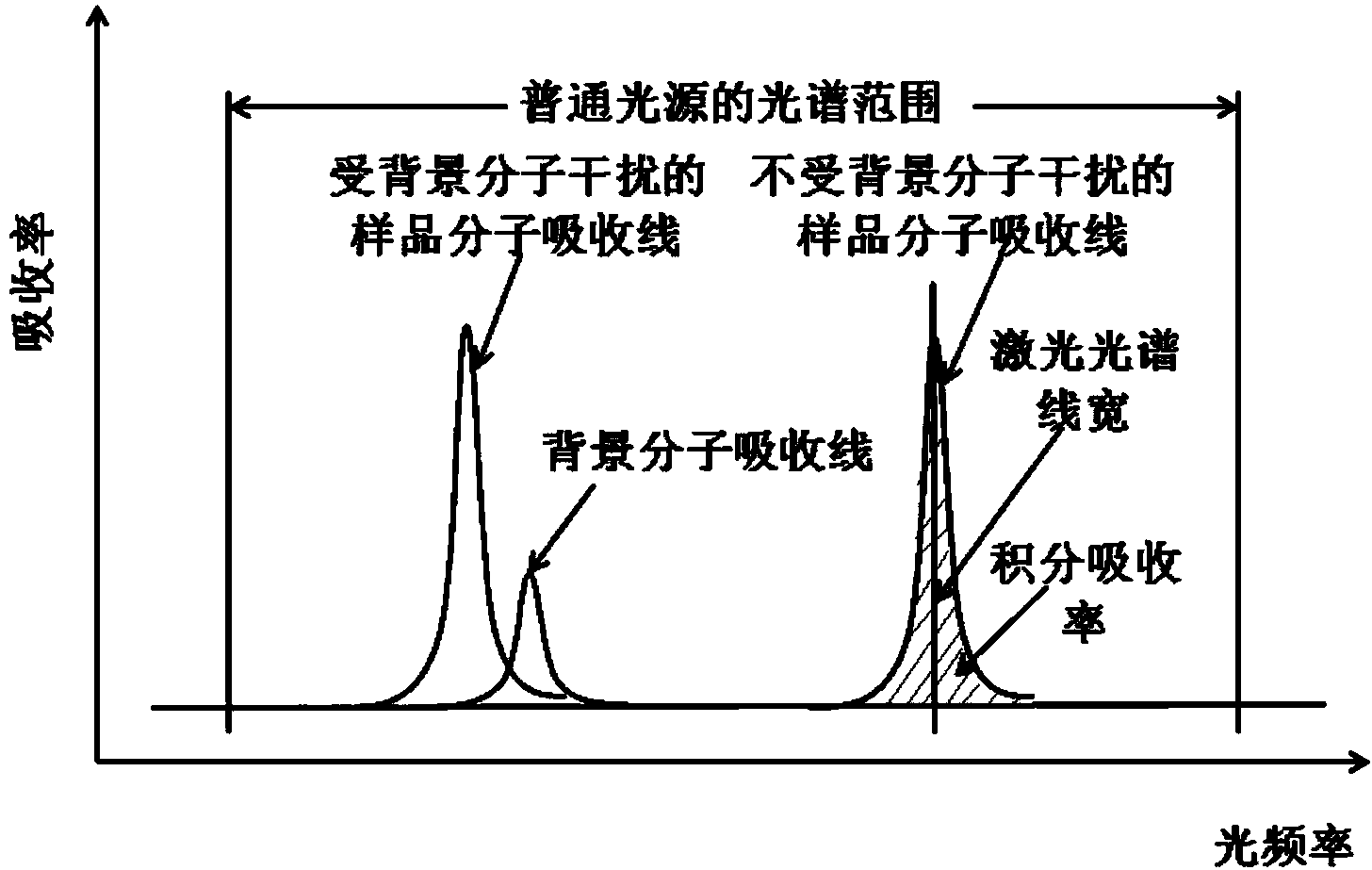Concentration analysis method
A technology of concentration analysis and intensity, which is applied in the field of chemical element concentration analysis and concentration analysis, can solve the problems of high cost of instrument system accessories, long instrument analysis process, and difficulty in portability, etc., to extend the calibration cycle, improve analysis accuracy, and analyze The effect of simple process
- Summary
- Abstract
- Description
- Claims
- Application Information
AI Technical Summary
Problems solved by technology
Method used
Image
Examples
Embodiment 1
[0062] This embodiment provides a method for analyzing the concentration of selenium in rice, such as figure 1 Shown is the analysis flowchart of described elemental concentration analysis method, and it comprises the following steps:
[0063] (1) Sample pretreatment:
[0064] Weigh 2.50g of the rice sample to be tested, add 25mL of mixed acid, let it stand overnight (more than 12 hours), then heat and digest until the solution is colorless and transparent; among them, the mixed acid is 1.40g / mL nitric acid (excellent grade) and 1.68g / mL perchloric acid (excellent grade) is mixed and prepared according to the volume ratio of 4:1;
[0065] When the volume of the solution is heated to 1-2mL, take it off and cool it, add 5mL of 6mol / L hydrochloric acid, heat until the solution becomes colorless and white smoke appears, then the element selenium in the rice sample to be tested is reduced from hexavalent selenium into tetravalent selenium, after cooling, the solution was transfe...
Embodiment 2
[0076] This embodiment provides a method for analyzing the concentration of arsenic in drinking water, which includes the following steps:
[0077] (1) Under acidic conditions, use 0.4% KI solution to first reduce the pentavalent arsenic in the sample to be tested to trivalent arsenic, and then use 1.5% KBH 4Solution (which contains 0.2% ascorbic acid as a sensitizer) reduces trivalent arsenic to negative trivalent arsenic in a slightly acidic solution, and the reaction time is 1h to obtain AsH 3 gas;
[0078] (2) Input nitrogen from the carrier gas input unit as a carrier gas, and convert the gaseous hydride AsH to 3 Input the sample gas into the multiple reflection spectrum absorption chamber for analysis. When the laser with wavelength λ is coupled into the chamber, the output amplitude of the circuit is automatically monitored by the photoelectric sensor for detection. When the output amplitude is higher than the preset The value is 3.5V, that is, the laser intensity in ...
Embodiment 3
[0087] The present embodiment provides a method for analyzing the concentration of nitrogen in milk powder, which is based on the Kjeldahl method, and through the improvement of the method of the present invention, simply and accurately measures the content of total nitrogen in milk powder; it includes the following steps:
[0088] (1) Sample pretreatment:
[0089] Weigh 0.50g milk powder, put it in the Kjeldahl flask, add 8.5g K 2 SO 4 , 0.4gCuSO 4 .5H 2 0 and 15ml of concentrated sulfuric acid, add a few glass balls to heat slowly and minimize the generation of foam to prevent the solution from splashing, and ensure that the sample is completely immersed in the sulfuric acid; after the foam in the milk powder sample disappears, increase the firepower until the solution is clear, and continue heating for 1 hour Cool to room temperature; add 50ml of pure water to dissolve salts, transfer to a 100ml volumetric flask after cooling, rinse the flask with pure water several time...
PUM
| Property | Measurement | Unit |
|---|---|---|
| reflectance | aaaaa | aaaaa |
Abstract
Description
Claims
Application Information
 Login to View More
Login to View More - R&D
- Intellectual Property
- Life Sciences
- Materials
- Tech Scout
- Unparalleled Data Quality
- Higher Quality Content
- 60% Fewer Hallucinations
Browse by: Latest US Patents, China's latest patents, Technical Efficacy Thesaurus, Application Domain, Technology Topic, Popular Technical Reports.
© 2025 PatSnap. All rights reserved.Legal|Privacy policy|Modern Slavery Act Transparency Statement|Sitemap|About US| Contact US: help@patsnap.com



